Strategy
4 minute read
5 Ways to Combat A Stolen Website Design.
LAST UPDATED:
August 16, 2023


It wasn’t until I received an odd phone call from an overseas contractor that I started thinking more about the possibility of a stolen website design. The fact that he was an overseas contractor wasn’t unusual; we get solicited by off-shore companies a lot. However, the fact that he was trying to communicate how he could copy huemordesigns.com was a bit alarming. After a bit more prying I found out that he was responding to a project request on Elance.
A quick search in the jobs post on Elance for “huemordesigns.com” resulted with this:

When you’re really visible online, copy cats are bound to show up and swagger jack you. This year alone we’ve had four different attempts to copy our website. While these attempts will never go away, there are ways to help you sniff it out, and options for dealing with it when it eventually happens to you. Below is a quick list of how we deal with a stolen website design and the best way to handle copyright infringement once it happens.
Set up Google Alerts for Your Brand’s Name and Main URL
Setting up Google Alerts for your brand’s name and main URL is a really effective way of knowing when you’re being mentioned. This is super helpful for finding out when you’re being featured somewhere or spoken about. Hopefully this will only bring good things to the surface for your brand, however, it will also provide you with the opportunity to flag poor reviews or people trying to rip you off.
To set up Google Alerts go to: https://www.google.com/alerts
Type in what you want to set an alert for, in this case our url: huemordesigns.com
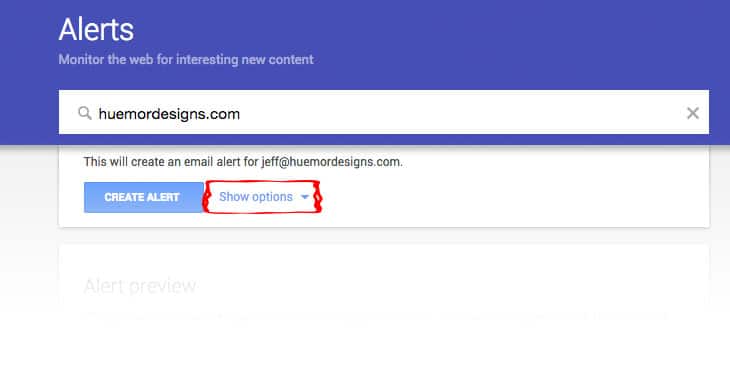
Now, you can configure these drop downs however you prefer, but if you would like to receive the largest amount of alerts quickly, this would be your preferred configuration.
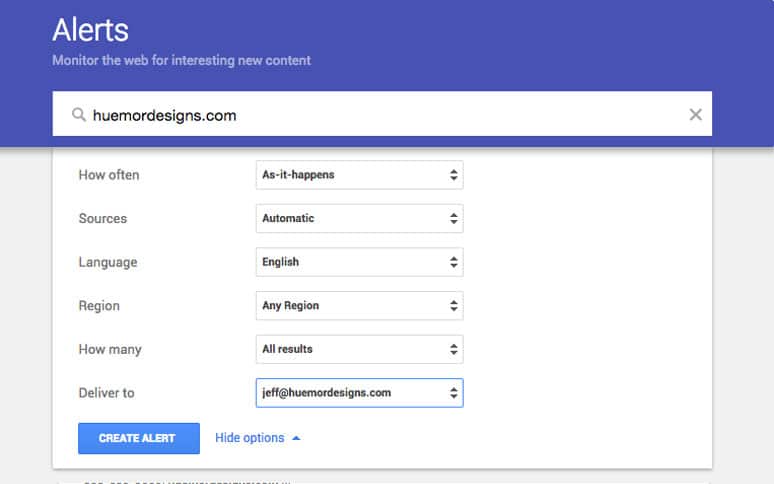
Occasionally Check if Your Content Exists Elsewhere
Take the time to run a check every now and then and see if any of your content has been plagiarized. Not only will you find websites that are ripping off or reposting your written content without your consent, you can possibly unearth a bigger problem.

Copyscape.com is the number one resource for making that happen. Their free tool isn’t bad, but from my experience, it isn’t very thorough either. However, their paid tool is super effective and fairly inexpensive. You can pay 5 cents per search or opt into a monthly monitoring service starting at $4.95.
We run these checks every 2-3 months to see what’s going on, and it has helped us capture many instances of infringement on our intellectual property.
Creating and Running Hostname Reports
This is a bit more advanced, but extremely helpful for discovering multiple instances of your website. If you don’t already have a Google Analytics account, create one and install the tracking code (Here’s a resource on how to get that done if you don’t know how).
First choose the account you would like to monitor
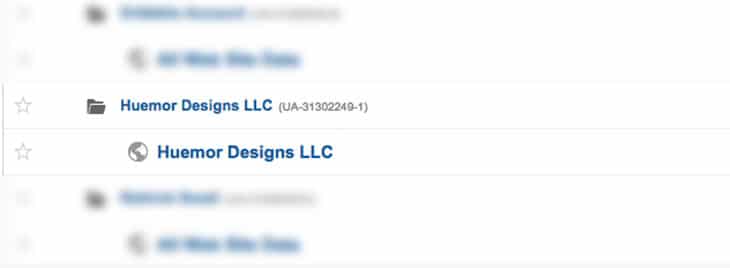

You should now be presented with a new reports window, first make sure you title your report and report content.
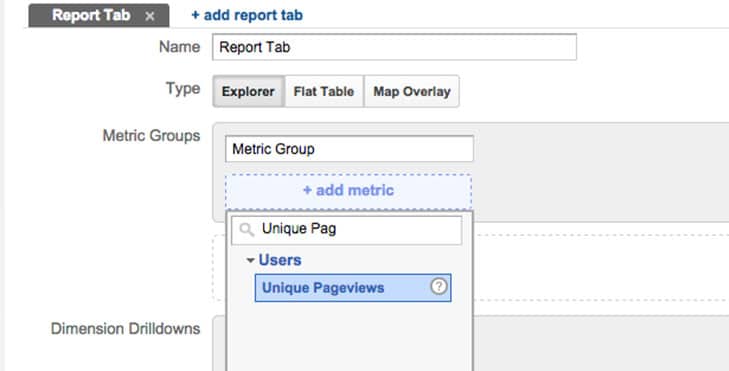

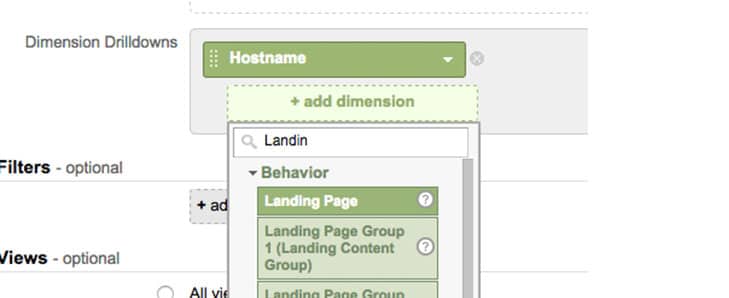
Now under Dimension Drilldowns choose “Add Dimension” and start typing in “Hostname” choose it when it appears.
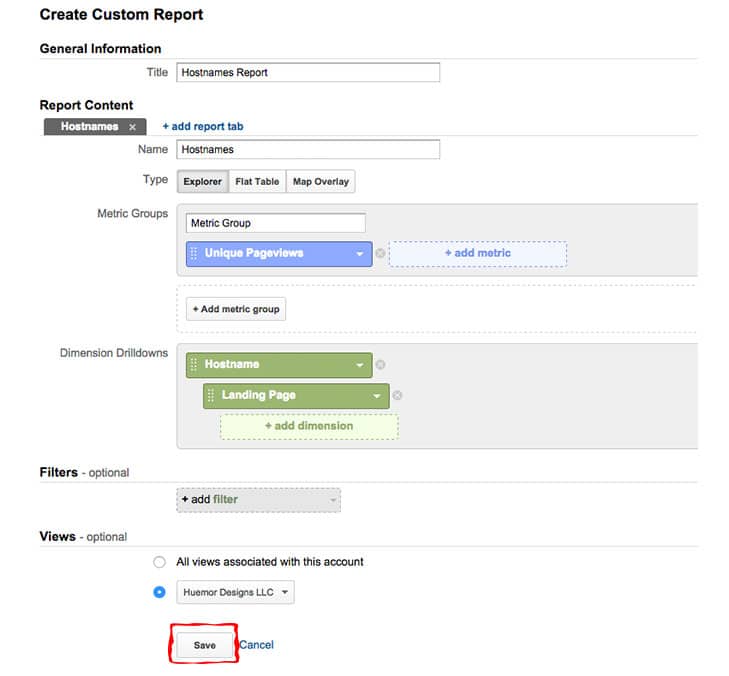
After saving you’ll be brought to your first Hostnames report. You should see any domains you own that use the same UA ID. If you see domains you don’t recognize, chances are they’re doing something shady with your Analytics Tracking code.
Adding Something Unique to Your Source Code
More often than not, the people hired to steal source code and reverse engineer websites aren’t the best at what they do. Adding something that’s traceable or identifiable in your source code is always a solid trump card. There’s many ways you can go about accomplishing this, just think creatively. I would reveal what we do, but I’d rather keep that secret.
Taking Down IP Theft Once It’s Occurred
If your content is being infringed (or proposed to be infringed) like ours was on Elance, your best first step is to contact the websites support immediately. Identify yourself, show proof of your copyright, explain what’s going on and demand they take care of it.
If your entire website has been stolen, I would suggest you first find out who the host provider is. Who Is Hosting This is an awesome resource for doing this. Contact the host provider directly through their support, identify yourself, show proof of your copyright, explain what’s going on and demand they take care of it. Some host providers will do this without the need of a DMCA complaint, however, some will not.
If all else fails and you can’t get a response from the website owner, consider filing for a DMCA takedown. This process has quite a few steps involved, so rather than re-hashing all of that here, I would suggest you check out this resource for more information.
In Summary
There’s no fool proof way of stopping individuals or organizations from stealing what you’ve worked on. However, the methods above will help you combat the stolen website design by being more proactive. The key is identifying the copy cat, minimizing their chances and taking action as soon as the left is noticed.
Get Memorable Insights.
Sign up to receive actionable web design advice directly in your inbox monthly.
Get Memorable Insights.
Sign up to receive actionable web design advice directly in your inbox monthly.
Author
Jeff Gapinski is the President of Huemor where he helps plan the long-term strategic growth of the agency. Jeff is passionate about UI/UX, demand generation, and digital strategy.
What Do You Think?
Have feedback? Maybe some questions? Whatever it is, we'd love to hear from you.







No comments found